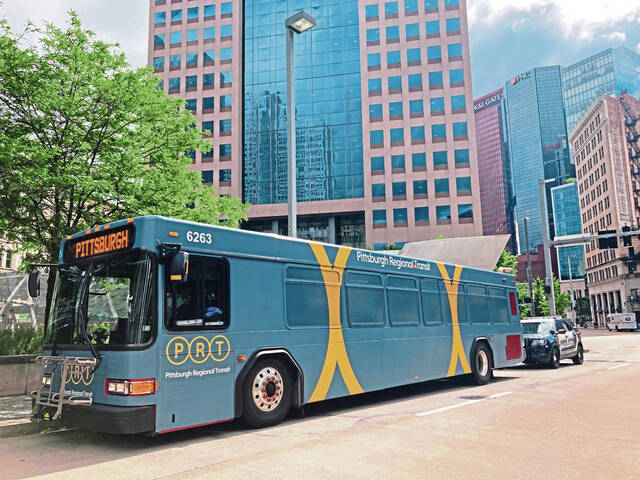Colin McNickle: Covid bailout dollars enabled transit inefficiencies
Mass transit use in Pittsburgh in 2022 continued to lag far behind the pre-pandemic levels of 2019, concludes a new analysis by the Allegheny Institute for Public Policy.
And, despite the large shortfalls in recovery for Pittsburgh Regional Transit (PRT) and many other systems, “there is apparently no urgency to cut costs or trim service because of the covid relief funds that will continue to be available to use,” says Jake Haulk, president-emeritus of the Pittsburgh think tank.
Haulk reviewed the operational numbers for PRT and 14 other transit systems nationwide.
To wit, PRT reports in its 2023 operating budget that it has received a total of $502 million in federal stimulus to support operating expenses, including employee costs.
Of that total, PRT has $338 million remaining to fill gaps in operations funding for a couple more years. This has enabled the system to operate with no layoffs, although there have been some slight reductions in staff through retirement and resignations.
But the dearth of passengers is stark.
“(I)n bus service, the passenger count (unlinked passenger trips) is down by 42.6% from 2019 to 2022 after a drop of 56% from 2019 to 2021,” Haulk notes.
At the same time, vehicle revenue miles (VRM) were down just 13.1%, while the employees involved in providing bus and rail service fell from 2,187 in 2020 to 2,145 in 2022 but are budgeted to rise to 2,418 in FY 2023, according to PRT’s budget numbers.
The “all-in cost” of providing bus service was $348,434,000 in FY 2022 with 31,556,000 passengers (calendar year) producing a per rider expense of $11.04. That’s an increase of 86% from the FY 2019 per passenger expense of $5.92.
“Meanwhile, the situation with light-rail service is far worse than the disastrous bus passenger decline,” Haulk says. “Light-rail passengers plunged 68% from 2019 to 2022 with the count dropping from 7,423,997 to 2,323,520.”
Meanwhile, light-rail VRM fell from 2.16 million in 2019 to 1.36 million in 2022 — a decline of 36.5%. This decline was three times the 13.1% decline in bus VRM during the period.
Per-rider cost on the “T” system, based on FY 2019 expense and calendar year 2019 riders ($70,910,000 expense and 7,423,997 passengers), was $9.55. But, by 2022, the cost per rider had climbed to an astounding $31.46, owing to the 68% drop in riders and a 3% rise in light-rail operations expenditures.
“In short, PRT’s long history of being an extremely high cost per passenger transit agency has been greatly exacerbated by the covid pandemic and the very slow recovery of passenger demand leading to a massive increase in per-rider cost,” Haulk says. “Only large infusions of supplemental funds from the federal government and the state have allowed the transit system to avoid layoffs and massive service cuts.”
Strikingly, if not inexcusably, all this has happened despite the failure of ridership to return to anywhere close to pre-covid levels.
“The waste of funds is deplorable, but, as with the other covid relief, it is seriously overdone,” Haulk laments. “Unused or unbudgeted covid funds should be withdrawn and returned to the government. All this does is enable inefficiency and waste throughout the country at the expense of taxpayers.
“This situation is setting a very bad precedent,” he concludes.
Colin McNickle is communications and marketing director at the Allegheny Institute for Public Policy and can be reached via email.
Remove the ads from your TribLIVE reading experience but still support the journalists who create the content with TribLIVE Ad-Free.

